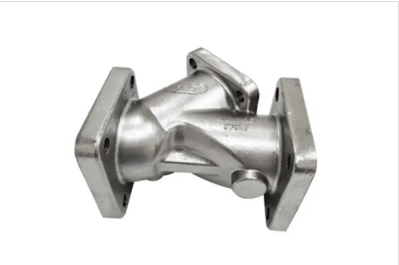Mobile:+86-311-808-126-83
Email:info@ydcastings.com
pressure casting
Pressure Casting A Comprehensive Overview
Pressure casting, also known as pressure die casting, is a manufacturing process that involves forcing molten metal into a mold cavity under high pressure. This technique has gained popularity in various industries due to its ability to produce complex and precise components quickly and efficiently. In this article, we will delve into the principles of pressure casting, its advantages, applications, and the future of this innovative manufacturing process.
The Process of Pressure Casting
The pressure casting process begins with the melting of metal, usually aluminum, zinc, or magnesium, in a furnace. The molten metal is then injected into a mold made of steel or another durable material. The injection can occur under two different pressures low-pressure and high-pressure.
In high-pressure die casting, molten metal is forced into the mold at pressures ranging from 1,000 to 20,000 psi. This process is suitable for high-volume production as it allows for rapid cycle times. On the other hand, low-pressure die casting involves the use of lower pressures, often below 1,000 psi, and is typically used for larger components or where less complexity is involved.
Once the metal fills the mold, it is allowed to cool and solidify. After cooling, the mold is opened, and the finished part is ejected. Any excess metal, known as flash, is trimmed from the final product. The result is a high-precision component with excellent surface finish and dimensional accuracy.
Advantages of Pressure Casting
One of the major advantages of pressure casting is the ability to produce parts that require minimal machining. Since the process allows for intricate designs and excellent finish quality, manufacturers can often reduce secondary operations, thus lowering production costs and lead times.
Moreover, pressure casting provides superior mechanical properties compared to other casting methods. The process can achieve a fine-grained structure in metals, resulting in increased strength and durability. Additionally, the tight tolerances achievable through pressure casting make it ideal for applications where precision is critical.
Another key advantage is the versatility of the materials that can be used. While aluminum and zinc are the most commonly used metals, advancements in technology have allowed for the application of pressure casting to other materials as well. This opens the door for innovative product designs across various sectors.
pressure casting

Applications of Pressure Casting
Pressure casting has found applications in numerous industries, including automotive, aerospace, consumer electronics, and medical devices. In the automotive industry, components such as engine blocks, transmission cases, and structural parts are often produced using this technique. The lightweight and strong nature of pressure cast aluminum parts is particularly valued in vehicles for improving fuel efficiency and performance.
In the aerospace sector, pressure casting is used to create components that require high strength-to-weight ratios. Parts such as housings for avionics and structural elements benefit from the precision and reliability offered by pressure casting.
Consumer electronics manufacturers utilize pressure casting for creating complex casings and other components. The smooth surface finish allows for aesthetic appeal, as well as practical functionality such as heat dissipation.
In medical applications, precision cast parts are essential for devices that interact with biological systems. Pressure casting ensures that these components meet stringent regulatory standards and perform reliably in critical applications.
The Future of Pressure Casting
As technology continues to advance, the future of pressure casting looks promising. Innovations such as additive manufacturing and improved mold materials may enhance the efficiency and capability of this process. The gradual shift towards sustainability also influences pressure casting, with a focus on using recyclable materials and minimizing waste.
Furthermore, the growing demand for lightweight yet durable materials in industries such as electric vehicles (EVs) and renewable energy may drive more research and development into advanced pressure casting techniques. By integrating smart manufacturing technologies, manufacturers can achieve greater process control and optimization, making pressure casting an even more attractive choice.
Conclusion
Pressure casting is a vital manufacturing process that offers numerous advantages in terms of efficiency, precision, and versatility. Its applications span across various industries, making it an indispensable method for producing high-quality components. As technology evolves, the potential for pressure casting continues to expand, promising exciting developments in manufacturing and engineering for years to come.
-
Why Should You Invest in Superior Pump Castings for Your Equipment?NewsJun.09,2025
-
Unlock Performance Potential with Stainless Impellers and Aluminum End CapsNewsJun.09,2025
-
Revolutionize Your Machinery with Superior Cast Iron and Aluminum ComponentsNewsJun.09,2025
-
Revolutionize Fluid Dynamics with Premium Pump ComponentsNewsJun.09,2025
-
Optimizing Industrial Systems with Essential Valve ComponentsNewsJun.09,2025
-
Elevate Grid Efficiency with High-Precision Power CastingsNewsJun.09,2025











